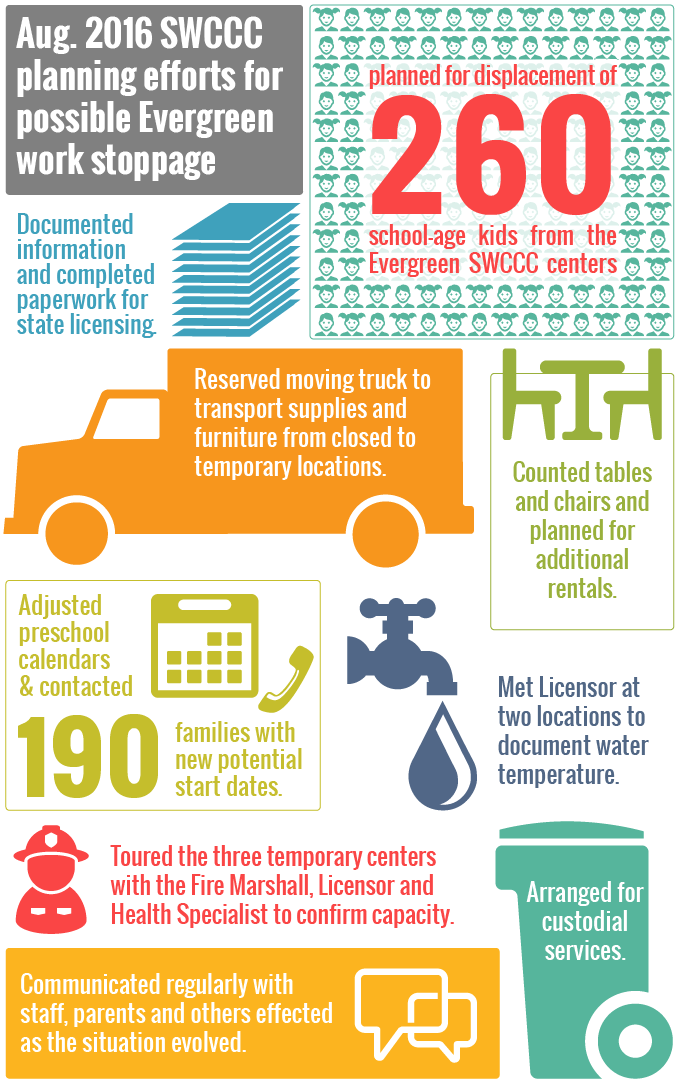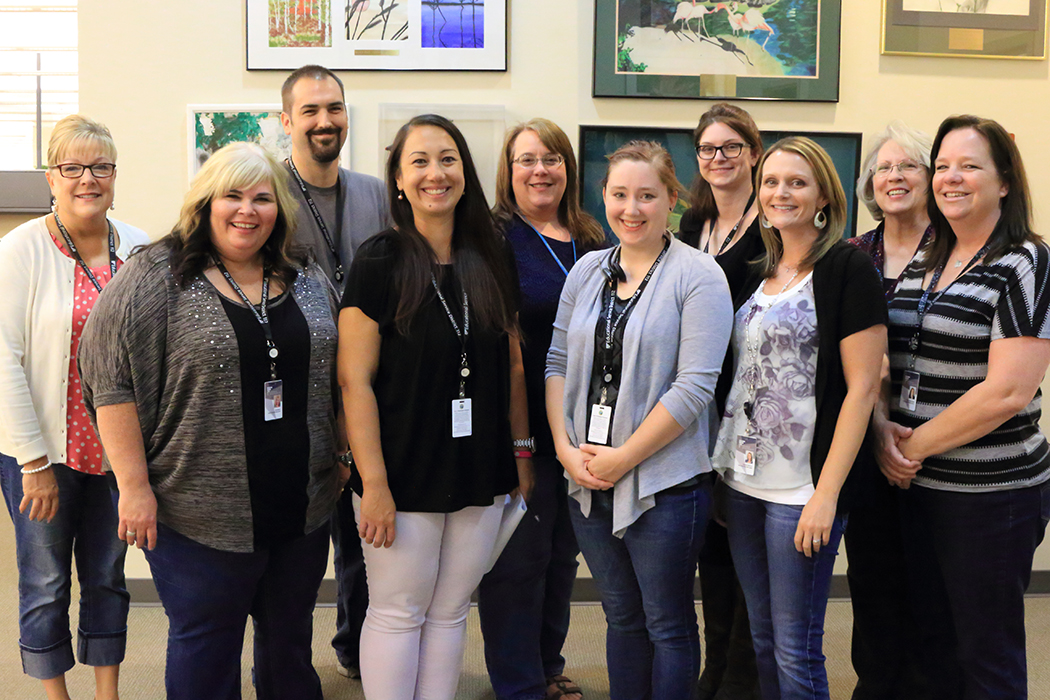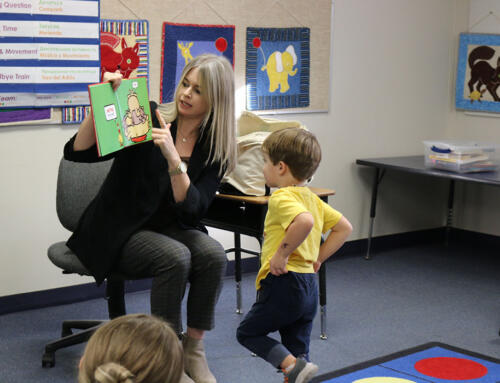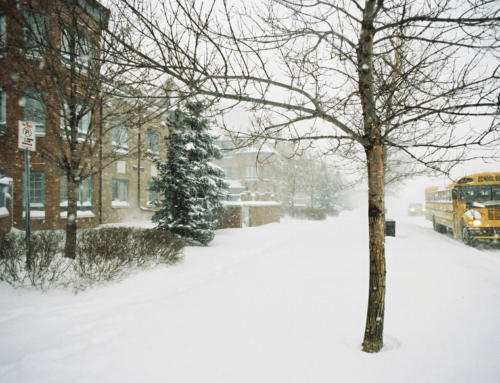The possibility of a work stoppage in Evergreen Public Schools the last week of August sent the ESD 112 teams of the Southwest Child Care Consortium (SWCCC) and the Early Childhood Education Assistance Program (ECEAP) into a flurry of activity as they prepared to do everything possible to minimize the effect on families. With 17 child care centers in that district, many of which are located on school property and would be unavailable during a work stoppage, the concern about child care weighed heavily on parents and families.
Thanks to the quick and creative work of staff, alternative sites were made ready to serve the 260 SWCCC children who would have been impacted by a work stoppage. The SWCCC/ECEAP teams acted swiftly and in just a matter of days had over 45 items checked off their “do-to” list. That list included major projects such as finding temporary locations, applying for additional licensing, meeting with fire marshals and state health specialists, adjusting food orders, securing U-Hauls to move furniture to temporary sites, adjusting staff schedules, setting up custodial services and supply lists, preparing special communications and maps for parents; and so much more.
Although the strike didn’t happen, SWCCC and ECEAP staff know that the work they did in August to create contingency plans for Evergreen child care families was a great drill for other potential school closures in any district, whether from teacher strike, natural disaster or other cause. When it comes to the children we serve, the question isn’t really “what do we do with them?”, it’s “what wouldn’t we do for them?”.

Infographic of August 2016 SWCCC planning efforts for possible Evergreen work stoppage. Documented information and completed paperwork for state licensing. Planned for displacement of 260 school-age kids from the Evergreen SWCCC centers. Reserved moving truck to transport supplies and furniture from closed to temporary locations. Counted tables and chairs and planned for additional rentals. Adjusted preschool calendars and contacted 190 families with new potential start dates. Met licensor at two locations to document water temperature. Toured the three temporary centers with Fire Marshall, Licensor and Health Specialist to confirm capacity. Arranged for custodial services. Communicated regularly with staff, parents and other effected as the situation evolved.





 ESD 112 equalizes educational opportunities for learning communities through innovative partnerships, responsive leadership, and exceptional programs.
ESD 112 equalizes educational opportunities for learning communities through innovative partnerships, responsive leadership, and exceptional programs.